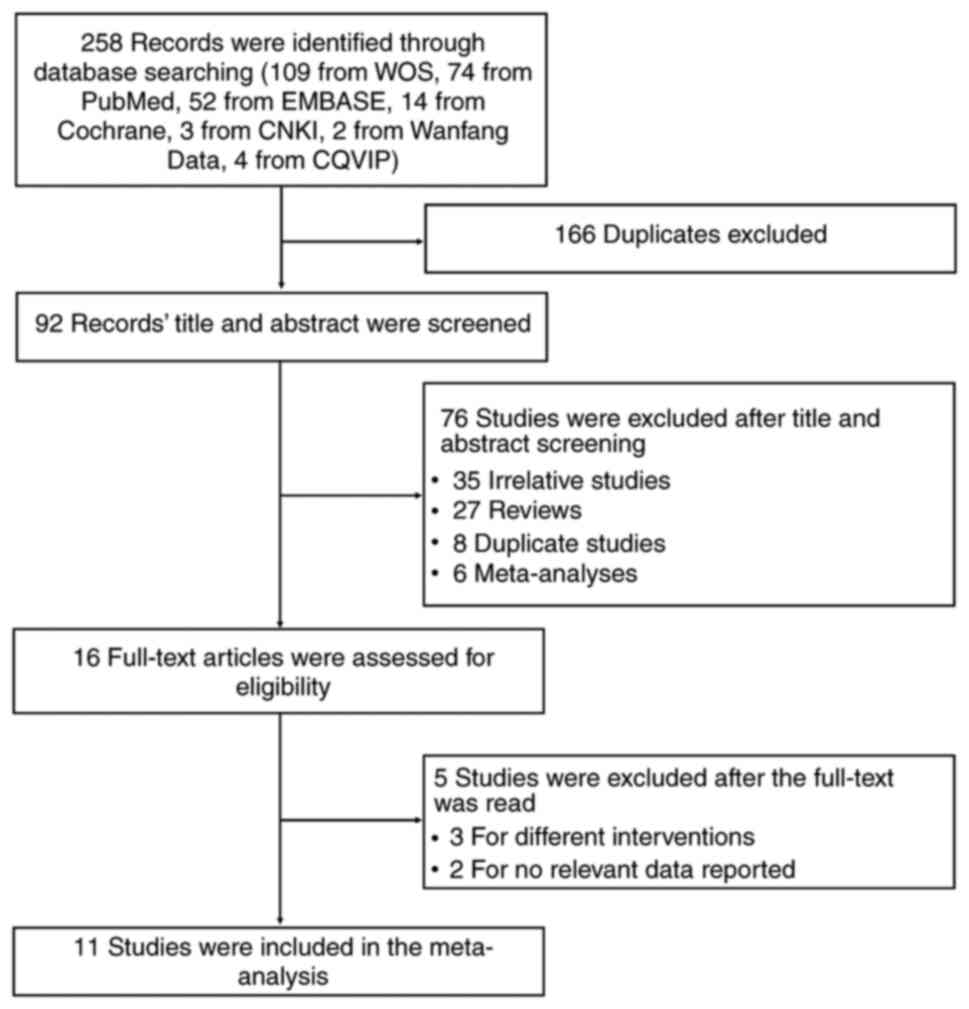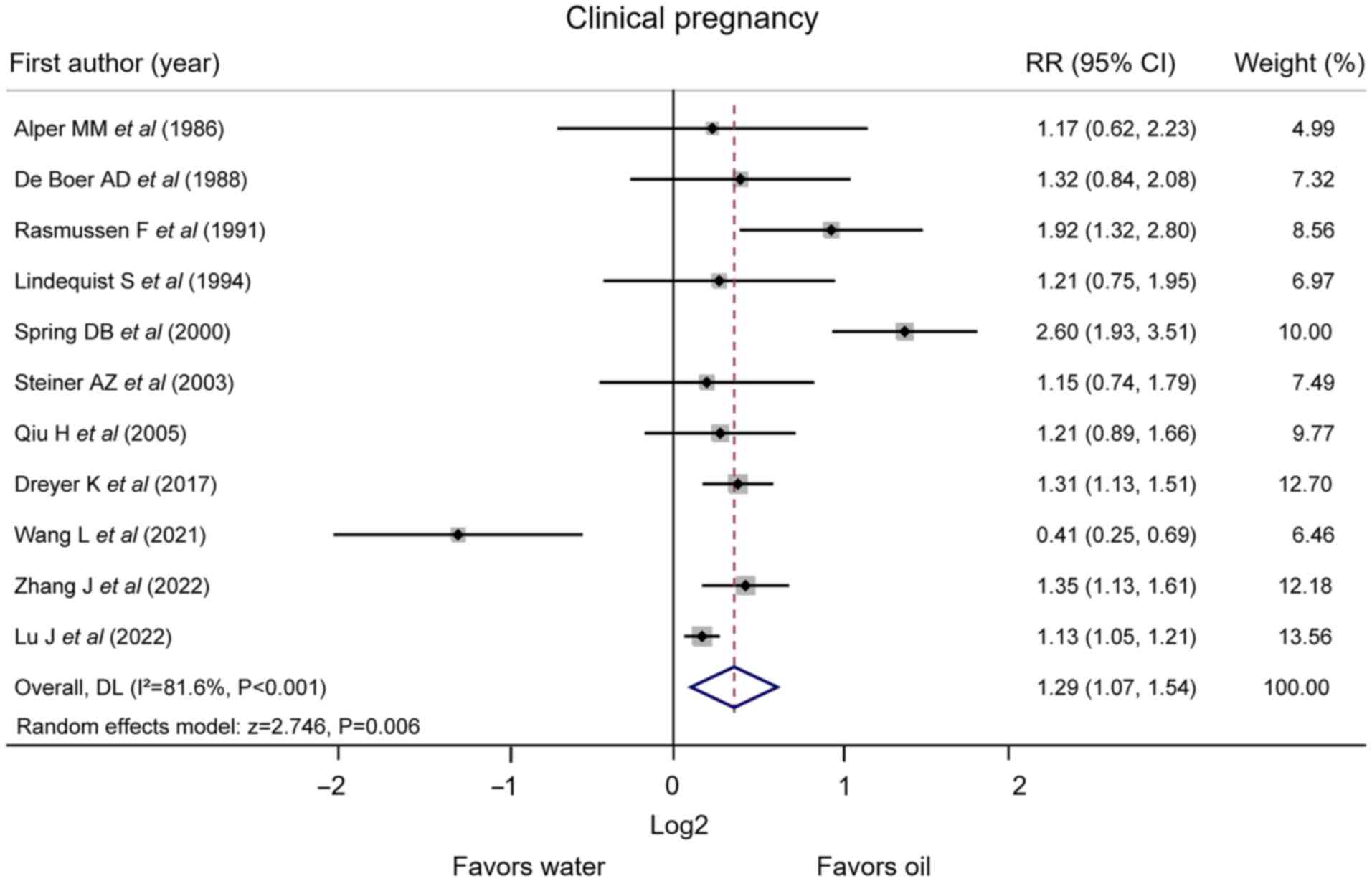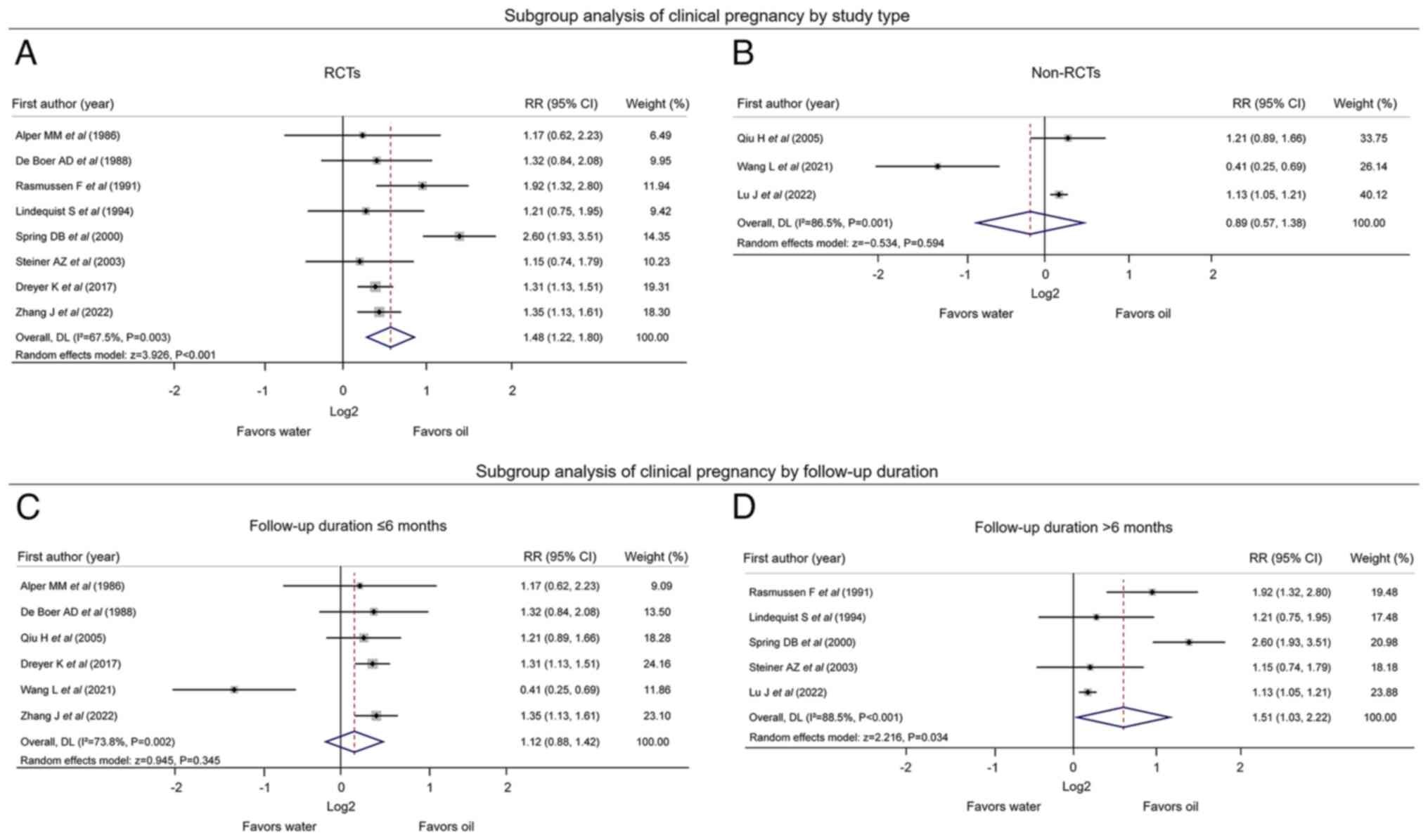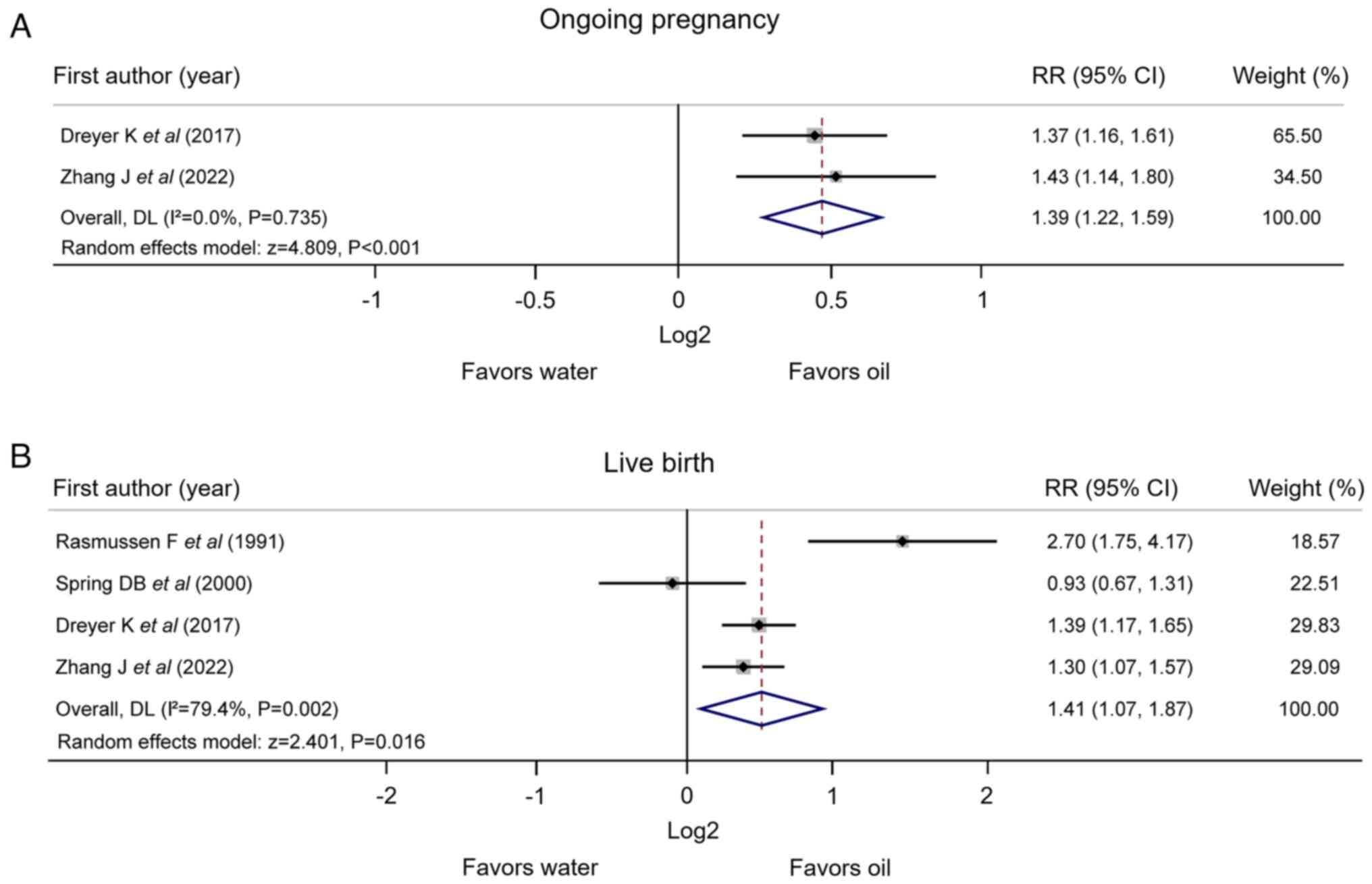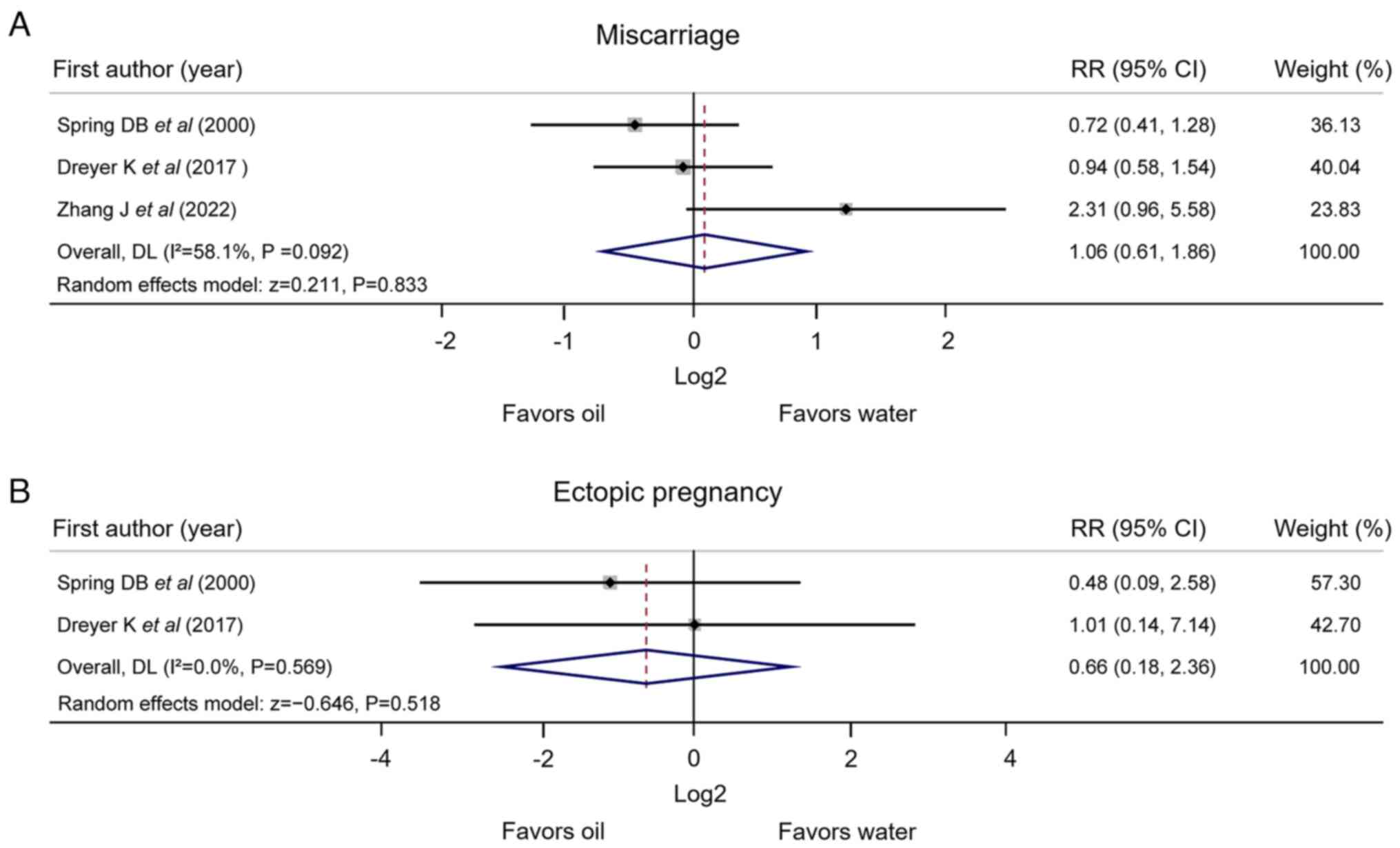|
1
|
Inhorn MC and Patrizio P: Infertility
around the globe: New thinking on gender, reproductive technologies
and global movements in the 21st century. Hum Reprod Update.
21:411–426. 2015.PubMed/NCBI View Article : Google Scholar
|
|
2
|
Boivin J, Bunting L, Collins JA and Nygren
KG: International estimates of infertility prevalence and
treatment-seeking: Potential need and demand for infertility
medical care. Hum Reprod. 22:1506–1512. 2007.PubMed/NCBI View Article : Google Scholar
|
|
3
|
Datta J, Palmer MJ, Tanton C, Gibson LJ,
Jones KG, Macdowall W, Glasier A, Sonnenberg P, Field N, Mercer CH,
et al: Prevalence of infertility and help seeking among 15 000
women and men. Hum Reprod. 31:2108–2118. 2016.PubMed/NCBI View Article : Google Scholar
|
|
4
|
Carson SA and Kallen AN: Diagnosis and
management of infertility: A review. JAMA. 326:65–76.
2021.PubMed/NCBI View Article : Google Scholar
|
|
5
|
Abrao MS, Muzii L and Marana R: Anatomical
causes of female infertility and their management. Int J Gynaecol
Obstet. 123 (Suppl 2):S18–S24. 2013.PubMed/NCBI View Article : Google Scholar
|
|
6
|
Grigovich M, Kacharia VS, Bharwani N,
Hemingway A, Mijatovic V and Rodgers SK: Evaluating fallopian tube
patency: What the radiologist needs to know. Radiographics.
41:1876–18961. 2021.PubMed/NCBI View Article : Google Scholar
|
|
7
|
Baramki TA: Hysterosalpingography. Fertil
Steril. 83:1595–1606. 2005.PubMed/NCBI View Article : Google Scholar
|
|
8
|
Zafarani F, Ghaffari F, Ahmadi F,
Soleimani Mehranjani M and Shahrzad G: Hysterosalpingography in the
assessment of proximal tubal pathology: A review of congenital and
acquired abnormalities. Br J Radiol. 94(20201386)2021.PubMed/NCBI View Article : Google Scholar
|
|
9
|
Li H, Ren Y, Yan J, Huang M, Zheng B, Luo
X, Huang S and Cai S: Fertility outcome and safety of ethiodized
poppy seed oil for hysterosalpingography in 1,053 infertile
patients: A real-world study. Front Med (Lausanne).
9(804494)2022.PubMed/NCBI View Article : Google Scholar
|
|
10
|
Roest I, Hajiyavand AM, Bongers MY,
Mijatovic V, Mol BWJ, Koks CAM and Dearn KD: What is the
fertility-enhancing effect of tubal flushing? A hypothesis article.
J Obstet Gynaecol. 42:1619–1625. 2022.PubMed/NCBI View Article : Google Scholar
|
|
11
|
Burks HR and Hansen KR: Oil or water-based
contrast for hysterosalpingography? Fertil Steril. 114:75–76.
2020.PubMed/NCBI View Article : Google Scholar
|
|
12
|
Liang G, Zhu Q, He X, Wang X, Jiang L, Zhu
C, Xie L, Qian Z and Zhang J: Effects of oil-soluble versus
water-soluble contrast media at hysterosalpingography on pregnancy
outcomes in women with a low risk of tubal disease: Study protocol
for a randomised controlled trial. BMJ Open.
10(e039166)2020.PubMed/NCBI View Article : Google Scholar
|
|
13
|
van Rijswijk J, van Welie N, Dreyer K,
Pham CT, Verhoeve HR, Hoek A, de Bruin JP, Nap AW, van Hooff MHA,
Goddijn M, et al: Tubal flushing with oil-based or water-based
contrast at hysterosalpingography for infertility: Long-term
reproductive outcomes of a randomized trial. Fertil Steril.
114:155–162. 2020.PubMed/NCBI View Article : Google Scholar
|
|
14
|
Alper MM, Garner PR, Spence JE and
Quarrington AM: Pregnancy rates after hysterosalpingography with
oil- and water-soluble contrast media. Obstet Gynecol. 68:6–9.
1986.PubMed/NCBI
|
|
15
|
de Boer AD, Vemer HM, Willemsen WN and
Sanders FB: Oil or aqueous contrast media for
hysterosalpingography: A prospective, randomized, clinical study.
Eur J Obstet Gynecol Reprod Biol. 28:65–68. 1988.PubMed/NCBI View Article : Google Scholar
|
|
16
|
Rasmussen F, Lindequist S, Larsen C and
Justesen P: Therapeutic effect of hysterosalpingography: Oil-versus
water-soluble contrast media-a randomized prospective study.
Radiology. 179:75–78. 1991.PubMed/NCBI View Article : Google Scholar
|
|
17
|
Lindequist S, Rasmussen F and Larsen C:
Use of iotrolan versus ethiodized poppy-seed oil in
hysterosalpingography. Radiology. 191:513–517. 1994.PubMed/NCBI View Article : Google Scholar
|
|
18
|
Spring DB, Barkan HE and Pruyn SC:
Potential therapeutic effects of contrast materials in
hysterosalpingography: A prospective randomized clinical trial.
Kaiser permanente infertility work group. Radiology. 214:53–57.
2000.PubMed/NCBI View Article : Google Scholar
|
|
19
|
Steiner AZ, Meyer WR, Clark RL and
Hartmann KE: Oil-soluble contrast during hysterosalpingography in
women with proven tubal patency. Obstet Gynecol. 101:109–113.
2003.PubMed/NCBI View Article : Google Scholar
|
|
20
|
Qiu HX: Clinical observation of 283 cases
of hysterosalpingography using nonionic contrast media. Chongqing
Med J. 34:796–798. 2005.
|
|
21
|
Dreyer K, van Rijswijk J, Mijatovic V,
Goddijn M, Verhoeve HR, van Rooij IAJ, Hoek A, Bourdrez P, Nap AW,
Rijnsaardt-Lukassen HGM, et al: Oil-based or water-based contrast
for hysterosalpingography in infertile women. N Engl J Med.
376:2043–2052. 2017.PubMed/NCBI View Article : Google Scholar
|
|
22
|
Wang LY, Du WF and Zhang QH: Explore the
clinical effect of iodized water and Lipiodol in the diagnosis and
treatment of secondary infertility in hysterosalpingography. J
Nongken Med. 43:29–31. 2021.
|
|
23
|
Zhang J, Lan W, Wang Y, Chen K, Zhang G,
Yang W, Chen H, Xu W, Ma J, Qin W, et al: Ethiodized poppyseed
oil-based contrast medium is superior to water-based contrast
medium during hysterosalpingography regarding image quality
improvement and fertility enhancement: A multicentric, randomized
and controlled trial. EClinicalMedicine. 46(101363)2022.PubMed/NCBI View Article : Google Scholar
|
|
24
|
Lu J, Qi D and Xu W: Fertility-enhancing
effect of oil-based contrast agents during hysterosalpingography
and the variation of this effect within a 3-year follow-up period
in infertile patients. Front Med (Lausanne).
9(948945)2022.PubMed/NCBI View Article : Google Scholar
|
|
25
|
Wang R, van Welie N, van Rijswijk J,
Johnson NP, Norman RJ, Dreyer K, Mijatovic V and Mol BW:
Effectiveness on fertility outcome of tubal flushing with different
contrast media: Systematic review and network meta-analysis.
Ultrasound Obstet Gynecol. 54:172–181. 2019.PubMed/NCBI View Article : Google Scholar
|
|
26
|
Fang F, Bai Y, Zhang Y and Faramand A:
Oil-based versus water-based contrast for hysterosalpingography in
infertile women: A systematic review and meta-analysis of
randomized controlled trials. Fertil Steril. 110:153–160.e3.
2018.PubMed/NCBI View Article : Google Scholar
|
|
27
|
Tsui S and Sofy AA: A meta-analysis of
fertility and adverse outcomes in oil- and water-based contrast for
hysterosalpingography. Turk J Obstet Gynecol. 20:64–73.
2023.PubMed/NCBI View Article : Google Scholar
|
|
28
|
Moher D, Liberati A, Tetzlaff J and Altman
DG: PRISMA Group. Preferred reporting items for systematic reviews
and meta-analyses: The PRISMA statement. PLoS Med.
6(e1000097)2009.PubMed/NCBI View Article : Google Scholar
|
|
29
|
Lundh A and Gøtzsche PC: Recommendations
by cochrane review groups for assessment of the risk of bias in
studies. BMC Med Res Methodol. 8(22)2008.PubMed/NCBI View Article : Google Scholar
|
|
30
|
Wells GA, Shea B, O'Connell D, et al: The
Newcastle-Ottawa Scale (NOS) for assessing the quality of
nonrandomized studies in meta-analyses. The Ottawa Hospital.
|
|
31
|
Izumi G, Koga K, Takamura M, Bo W, Nagai
M, Miyashita M, Harada M, Hirata T, Hirota Y, Yoshino O, et al:
Oil-soluble contrast medium (OSCM) for hysterosalpingography
modulates dendritic cell and regulatory T cell profiles in the
peritoneal cavity: A possible mechanism by which OSCM enhances
fertility. J Immunol. 198:4277–4284. 2017.PubMed/NCBI View Article : Google Scholar
|
|
32
|
Johnson JV, Montoya IA and Olive DL:
Ethiodol oil contrast medium inhibits macrophage phagocytosis and
adherence by altering membrane electronegativity and
microviscosity. Fertil Steril. 58:511–517. 1992.PubMed/NCBI View Article : Google Scholar
|
|
33
|
van Welie N, Dreyer K, van Rijswijk J,
Verhoeve HR, Goddijn M, Nap AW, Smeenk JMJ, Traas MAF,
Rijnsaardt-Lukassen HGM, van Dongen AJCM, et al: Treatment effect
of oil-based contrast is related to experienced pain at HSG: A
post-hoc analysis of the randomised H2Oil study. Hum Reprod.
34:2391–2398. 2019.PubMed/NCBI View Article : Google Scholar
|
|
34
|
van Welie N, Rosielle K, Dreyer K, van
Rijswijk J, Lambalk CB, van Geloven N, Mijatovic V, Mol BWJ and van
Eekelen R: H2Oil Study Group. How long does the fertility-enhancing
effect of hysterosalpingography with oil-based contrast last?
Reprod Biomed Online. 41:1038–1044. 2020.PubMed/NCBI View Article : Google Scholar
|
|
35
|
Wang R, Watson A, Johnson N, Cheung K,
Fitzgerald C, Mol BWJ and Mohiyiddeen L: Tubal flushing for
subfertility. Cochrane Database Syst Rev.
10(CD003718)2020.PubMed/NCBI View Article : Google Scholar
|
|
36
|
Harris EA, Stephens KK and Winuthayanon W:
Extracellular vesicles and the oviduct function. Int J Mol Sci.
21(8280)2020.PubMed/NCBI View Article : Google Scholar
|
|
37
|
Court KA, Dare AJ, Weston-Webb M, Hadden
WE, Sim RG and Johnson NP: Establishment of lipiodol as a fertility
treatment-prospective study of the complete innovative treatment
data set. Aust N Z J Obstet Gynaecol. 54:13–19. 2014.PubMed/NCBI View Article : Google Scholar
|
|
38
|
Quenby S, Gallos ID, Dhillon-Smith RK,
Podesek M, Stephenson MD, Fisher J, Brosens JJ, Brewin J, Ramhorst
R, Lucas ES, et al: Miscarriage matters: The epidemiological,
physical, psychological, and economic costs of early pregnancy
loss. Lancet. 397:1658–1667. 2021.PubMed/NCBI View Article : Google Scholar
|
|
39
|
Tonick S and Conageski C: Ectopic
pregnancy. Obstet Gynecol Clin North Am. 49:537–549.
2022.PubMed/NCBI View Article : Google Scholar
|



